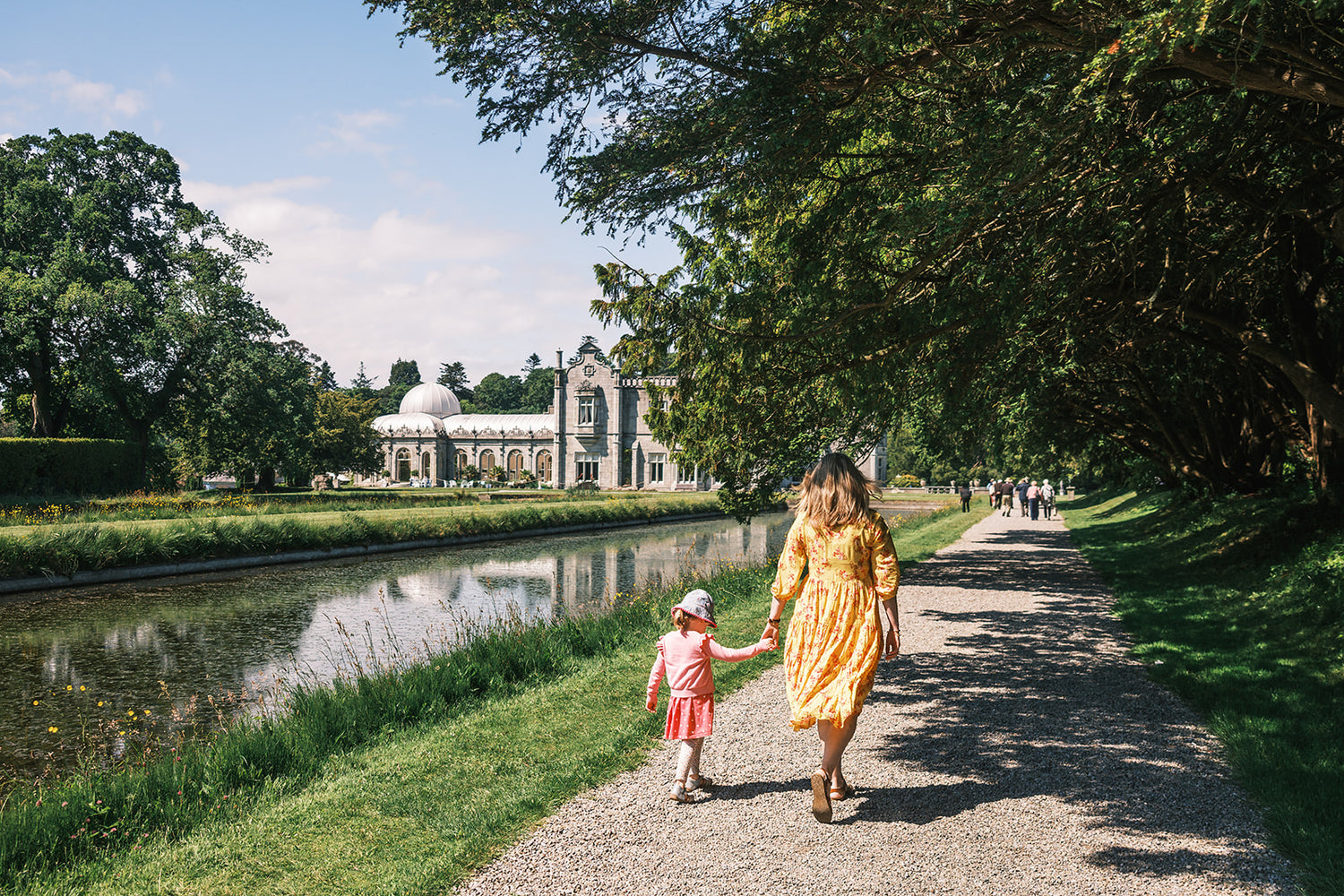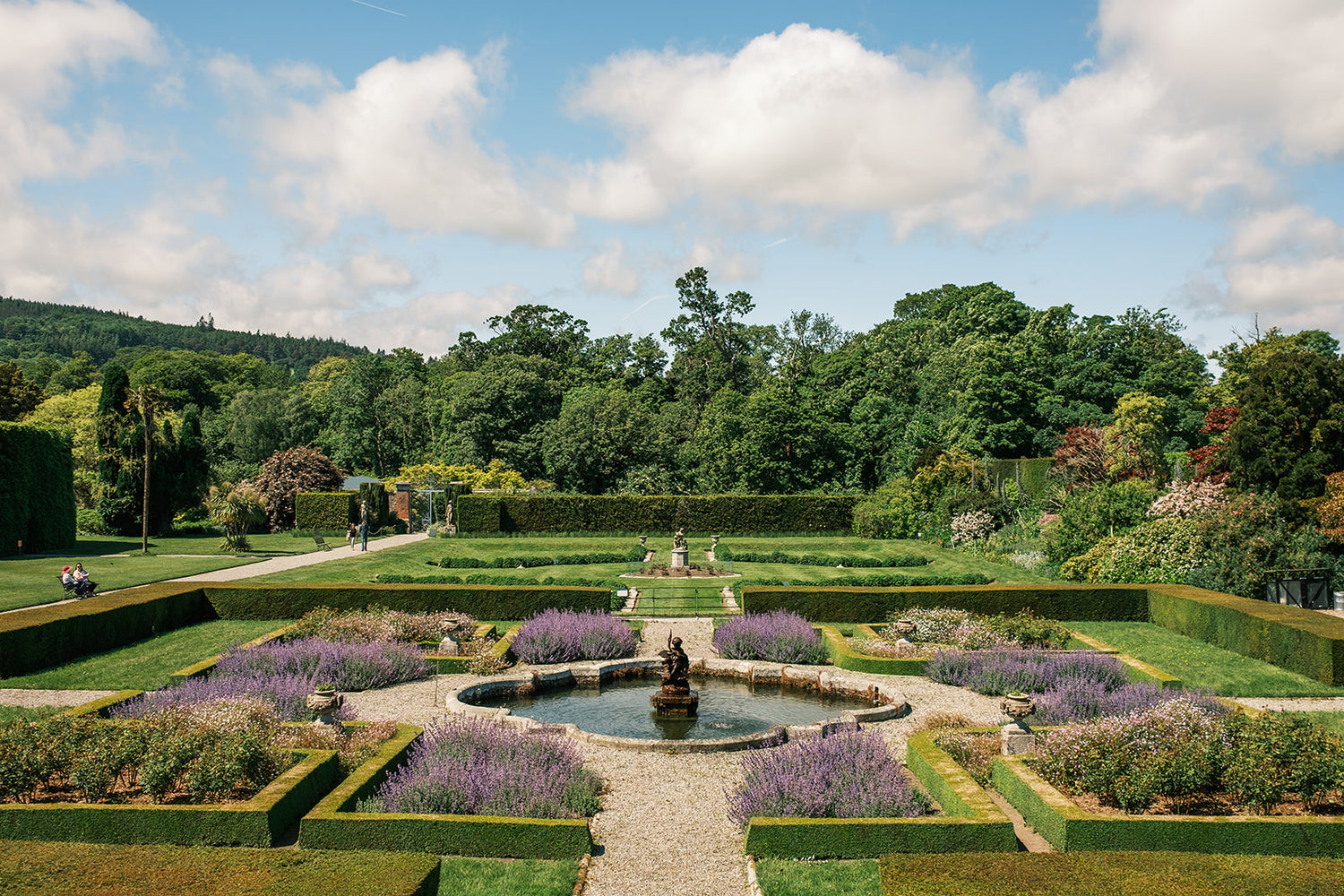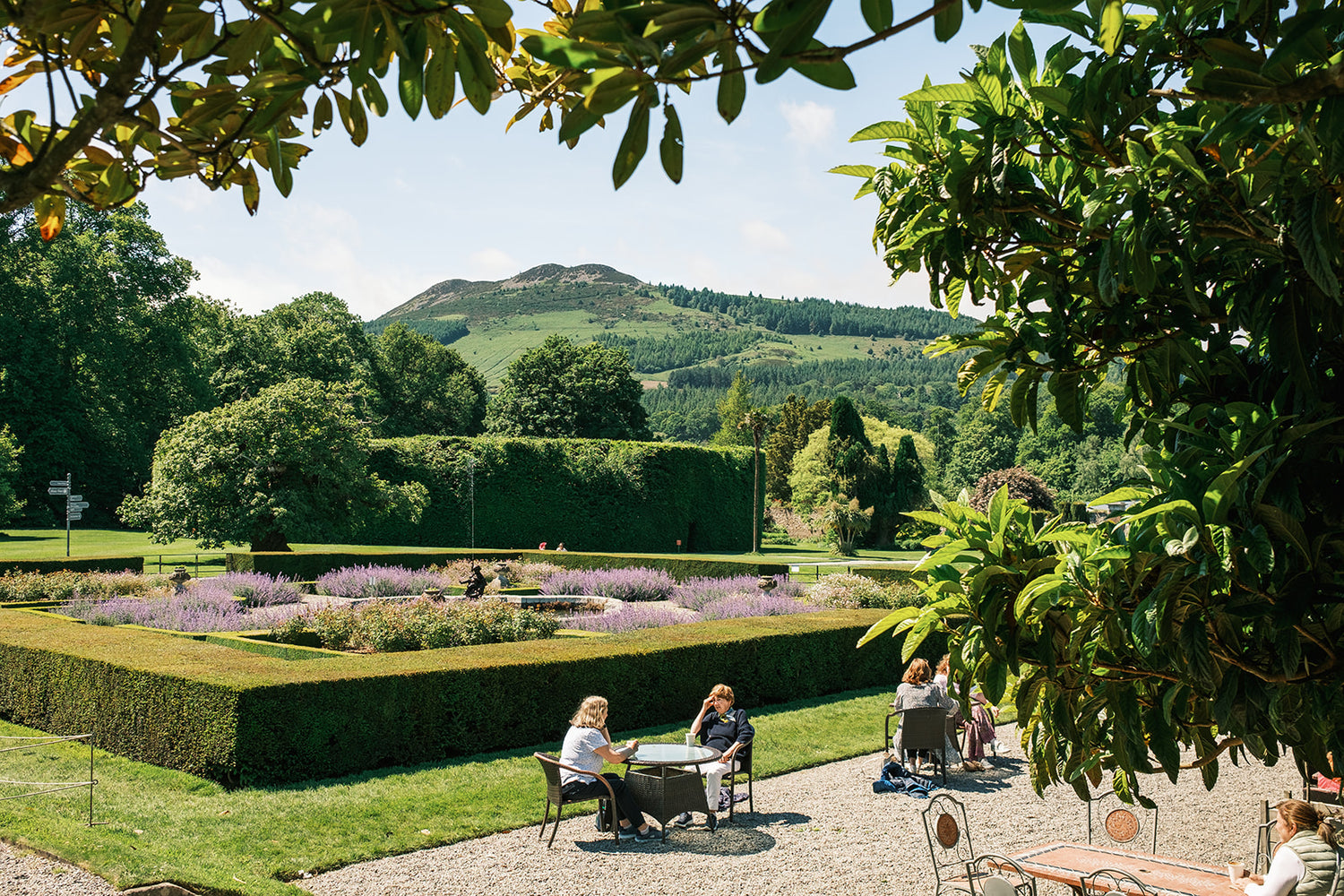KILLRUDDERY IS SET IN THE INCREDIBLE HERITAGE OF CO. WICKLOW, THE GARDEN OF IRELAND.
NOW CLOSED FOR THE SEASON
REOPENING 27TH MARCH, 2026
Located only 30 minutes south of Dublin, Killruddery’s 800-acre estate is a sustainable, bio-diverse farm that includes flowering woodland, world-renowned 17th century gardens, cut flower gardens, high-hedged pathways, a natural amphitheatre area, the Long Ponds and a Walled Garden. Special family-orientated features include a Faerie Woodland Village and a Giant Sandpit in the Apple Orchard.
Established by the fourth and sixth Earls of Meath, the Gardens are now lovingly overseen by the current 15th Earl of Meath and Lord and Lady Ardee – direct ancestors of the first Brabazons to live at Killruddery in 1618. The twenty acres of grass, 3.5 miles of hedges, long flowering borders, ancient trees and the Walled Garden, now producing for Killruddery’s kitchen, are maintained by a brilliant team of gardeners over the seasons.
Become a Killruddery Member, for free entry to our Gardens during Open Season, year-round access to our Farm Roads, free and discounted events in our Event Progra
-
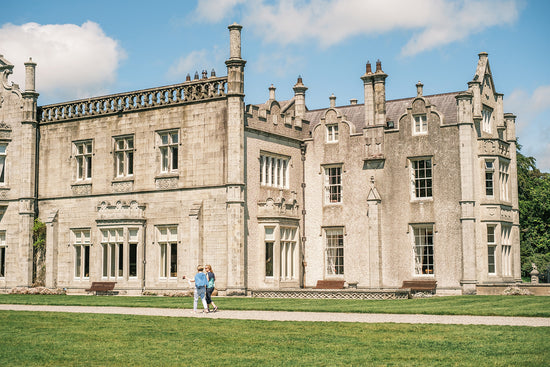
-
HOUSE & GARDENS ADMISSIONS
GARDENS
OPEN May – September INCLUSIVE Tues – Sun – 09.30 – 18.00 (last entry 17.00).Open April + October Tues – Sun – 09.30 – 17.00 (last entry 16.00)
Please note dogs are not permitted in the formal gardens
TICKET PRICES:
MEMBERS:
- Garden entry: Free
- House tours: €6 per person
GARDEN ENTRY - NON MEMBERS:
- Adult: €10.50
- Concession: €9.50
- Child (4-12 years): €4
HOUSE + GARDEN TICKET:
Adult House + Garden Ticket: €17.50
Concession House + Garden Ticket: €15
Child (4-12 years): €9.50
HOUSE TOURS
House tours are linked to Gardens Open Season and will return in April Open Tuesday – Sunday. For more information click here. -
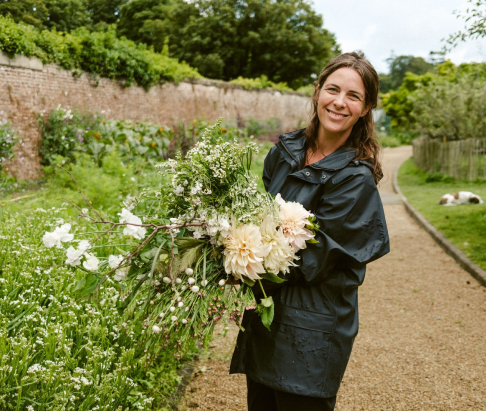
-
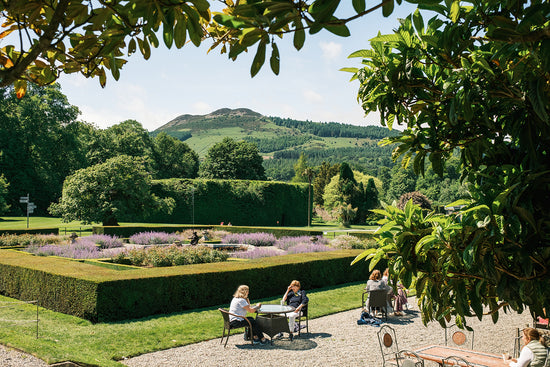
INSPIRED BY THE PALACE OF VERSAILLES
A RENOWNED HUGUENOT GARDENER NAMED BONET, WHO HAD SERVED SIR WILLIAM PETTY, WAS EMPLOYED AT KILLRUDDERY AS EARLY AS 1682. HE WAS A DISCIPLE OF THE GREAT LANDSCAPE DESIGNER ANDRÉ LE NOTRE, FAMOUS FOR THE GARDENS OF THE PALACE OF VERSAILLES NEAR PARIS.
He worked within the contours of the landscape and a record dating from 1711 reports that Killruddery was endowed with “a Pleasure Garden, Cherry Garden, Kitchen Garden, New Garden, Wilderness, Gravel Walks and Bowling Green, all Wall’d about, and well planted with Fruit Trees, with several Canals or Fish-ponds, well stor’d with Carp and Tench…’
The gardens have been enriched with noble trees that have been planted by successive generations of the Brabazon family since the estate came into their possession over 400 years ago, often to mark the birth of a new family member.
-
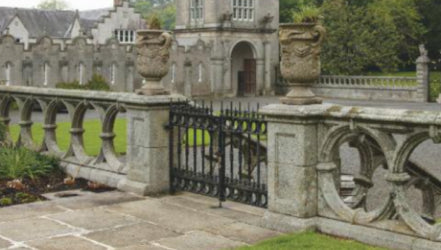
The Forecourt
LEADING TO ROCK WOOD
The Forecourt, with finely curved granite balustrade, was designed by Daniel Robertson as part of the mid-nineteenth Century enlargement of the mansion. The fine pair of entrance gates is the work of Edward Sheldon. To the right of these gates, viewed from the courtyard is an unusual stand of Blackwoods, Acacia melanoxylon, a tree-like wattle from Australia found in Ireland in only a few favourable locations. These trees flower prolifically in springtime.
Steps lead up to the magnificent terraced lawn which stretches east, leading to a massive outcrop of rock which was originally planted with alpines by the 13th Earl of Meath (1869-1949). To the right of The Rock is Rock Wood which has been under-planted with shade-bearing plants and shrubs with winding paths between the recent plantings.
-
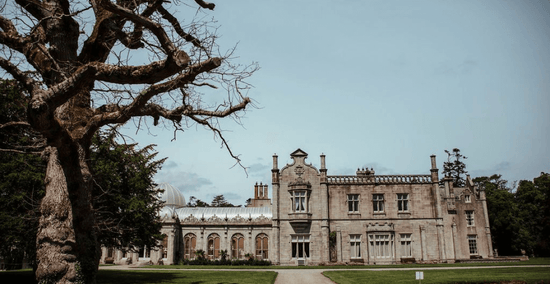
SOUTH TERRACE
IN FRONT OF THE HOUSE
The South Terrace in front of the house gives a panoramic view of the Long Ponds and the Lime Avenue in the parkland beyond the fountain. To the left is ‘Eve’s Bed’, a statue of Eve reclining.
On the left of the East Lawn, bordering a wood, are zinc alloy statues by Milt Kahl of Potsdam, Germany. On these East Lawns stands a large Turkey oak, Quercus cerris, planted to mark the birth of the present Lord Meath.
-
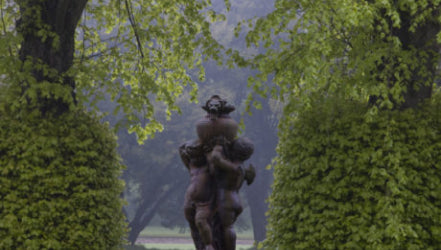
THE ANGLES
ANGLED WALKS
The Angles can be approached by the granite steps through the Rhodie Rood, a planting of Himalayan rhododendrons, Rhododendrons arboreum. The plants are about 150 years old and replace a maze that is known to have been on this site originally. Note the Chinese varnish tree, Rhus portaninii and the Maidenhair tree, Ginkgo bilabo. Beside the steps leading into the Angles find the Cupressus torulosa.
The Angles paths were laid out as pattes d’oie (French for ‘goose feet’), which offer a beguiling series of angled walks formed by high hedges of beech, hornbeam and common lime. The layout was very much in keeping with the fashion of the day.
At the end of the central path of the Angles the vista is closed with ancient evergreen Holm oaks dating from the end of the seventeenth century. Due to its Latin binominal, Quercus ilex, it is often known also as an ilex, meaning the leaves are holly-like. Beyond the Angles exists the old Bowling Green which is now a sports activities space for visitors. Nearby, an avenue known as ‘Monks Walk’ is planted with a number of interesting conifers.
-
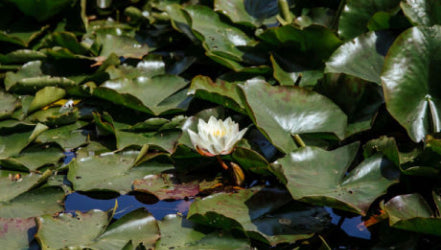
The BEECH CIRCLE
ROUND POND
The Beech Circle, part of the 17th Century garden, boasts a round pond 60 feet in diameter in the centre of which is an elaborate French fountain with many jets. The double row of beeches, now more than 250 years old, allowed guests to walk on an inside path with ‘windows’ cut in the hedge affording views of the pond and its fountains. Also note the 19th Century statues representing the four seasons cast by Barbezat & Cie of Val d’Osne in France.
Nearer to the house the Sylvan Theatre is still used for outdoor theatrical entertainments. Sir Walter Scott much admired the theatre which inspired his play, St. Ronan’s Well. Two fine marble statues and the elaborate gates provide a suitable theatrical entrance.
-
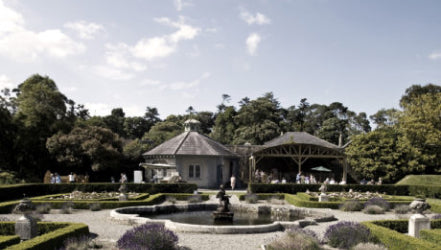
LOWER PARTERRE
SUNKEN GARDEN
Between the Beech Circle and the garden wall, below the house, lies the 19th Century garden laid out in 1846 by Daniel Robertson, famous for his work at Powerscourt. He laid out the lower parterre or sunken garden. Sir George Hodson, a neighbour and amateur architect, designed the enchanting ornamental Dairy which is now the Garden’s Tea Room.
-
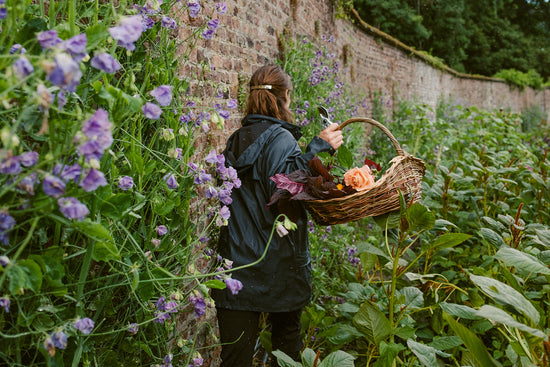
WALLED GARDEN
KITCHEN & CUT FLOWER GARDEN
The Walled Garden can be accessed from the general Garden Entrance and is now providing an array of delicious ingredients for our Kitchen, Tea Room, Grain Store and Farm Shop. The Apple Orchard is harvested annually for Killruddery’s own apple juice and we keep bees, hens, and pigs here. There is also a Picnic Area and Giant Sandpit for our little visitors!
A Victorian glasshouse, known as a pit house, has been expertly restored, with the help of a heritage grant from Fáilte Ireland. The brickwork, glass and fittings have been meticulously replaced as the original manufacturer, Moncur of Edinburgh, designed them in the 1870s.
The designed cutting garden is delivering the most beautiful blooms for garden-fresh bouquets this year, including spring bulbs, exuberant dahlias in an array of colours and shapes and delicate summer scabiosa.
-
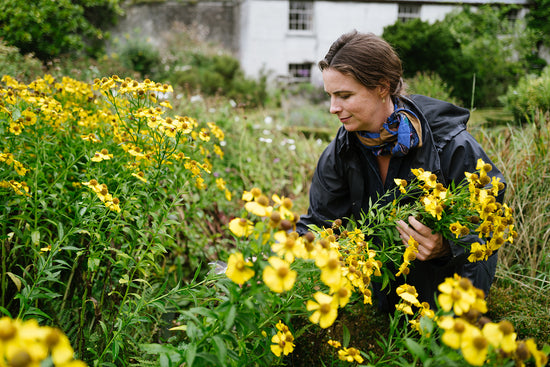
LADY ARDEE
TOP TIPS
Our Garden is a rich landscape of formal planting. As an insider who lives here all year round, I almost take its formality for granted! When I do take time to walk and be in the Garden, it is the life that thrives within it that refreshes and surprises me. So many species of bird, red and grey squirrels, occasional rabbits, foxes and deer, butterflies, beetles, spiders, stoats – and endless unplanted wild flowers or escaped seedlings. The trees and plants are responding to the seasons before our eyes. My top tips: walk around the Long Ponds in bare-feet and take a slower pace near the fountain allowing its burble to wash over you. The stone steps at the back of The Rock offer mystery again and again – and it’s the best place to pick up acorns, beech seeds, chestnuts and pine cones…
-
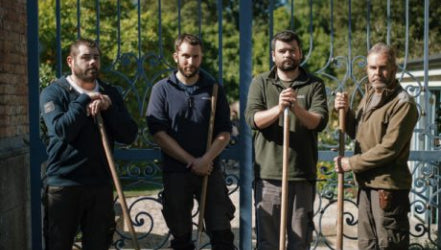
DARAGH FARREN
HEAD GARDENER: WINTER NOTE
Autumn and winter offer us an opportunity to spend some time tending to project type work, or remedial work on various aspects of the garden. Killruddery is a beautiful old heritage garden, packed with history and also populated by a fair number of old plants. Occasional remedial work is fundamental to these kinds of plants and features enduring – an important part of our job. We have been carrying out some of this kind of work on a lot of our hedges. So far we’ve worked on some of the deciduous specimens in The Angles (a significant feature of the 17th century design of the garden) by, in a nutshell, reducing their height. This must be carried out with care – each cut matters, and with some delicate plant material within, there is a considerable degree of finesse required.
Testimonials
This is a stunning place with even more stunning gardens. Unfortunately I'm visiting at a time when the weather is exceptionally cold but I can envisage myself strolling around in the heat of the summer and taking shade under one of the many large oak trees that surround the gardens with a good novel to hand. Look forward to visiting during the summer next year.
Me and my wife visited Killruddery in August. We were staying at the Wilton Hotel which is just across the road from the main entrance. Weather was great which makes everything better! Lots of open space to explore around the gardens. The views from 'The Rock' were great. It's a lovely place to just sit and relax. We had coffee and cake from the Tea Room in the gardens which we both thoroughly enjoyed (again with great views)
Our visit to Killruddery was one of the highlights of the summer. Although the weather was not kind to us on the day we enjoyed visiting the market and had a nice breakfast in Killruddery Yard. We enjoyed a fantastic tour of the house with Sarah. She was so knowledgeable and passionate about the history of the house. She was excellent. Wouldn't hesitate to recommend a visit to Killruddery.




